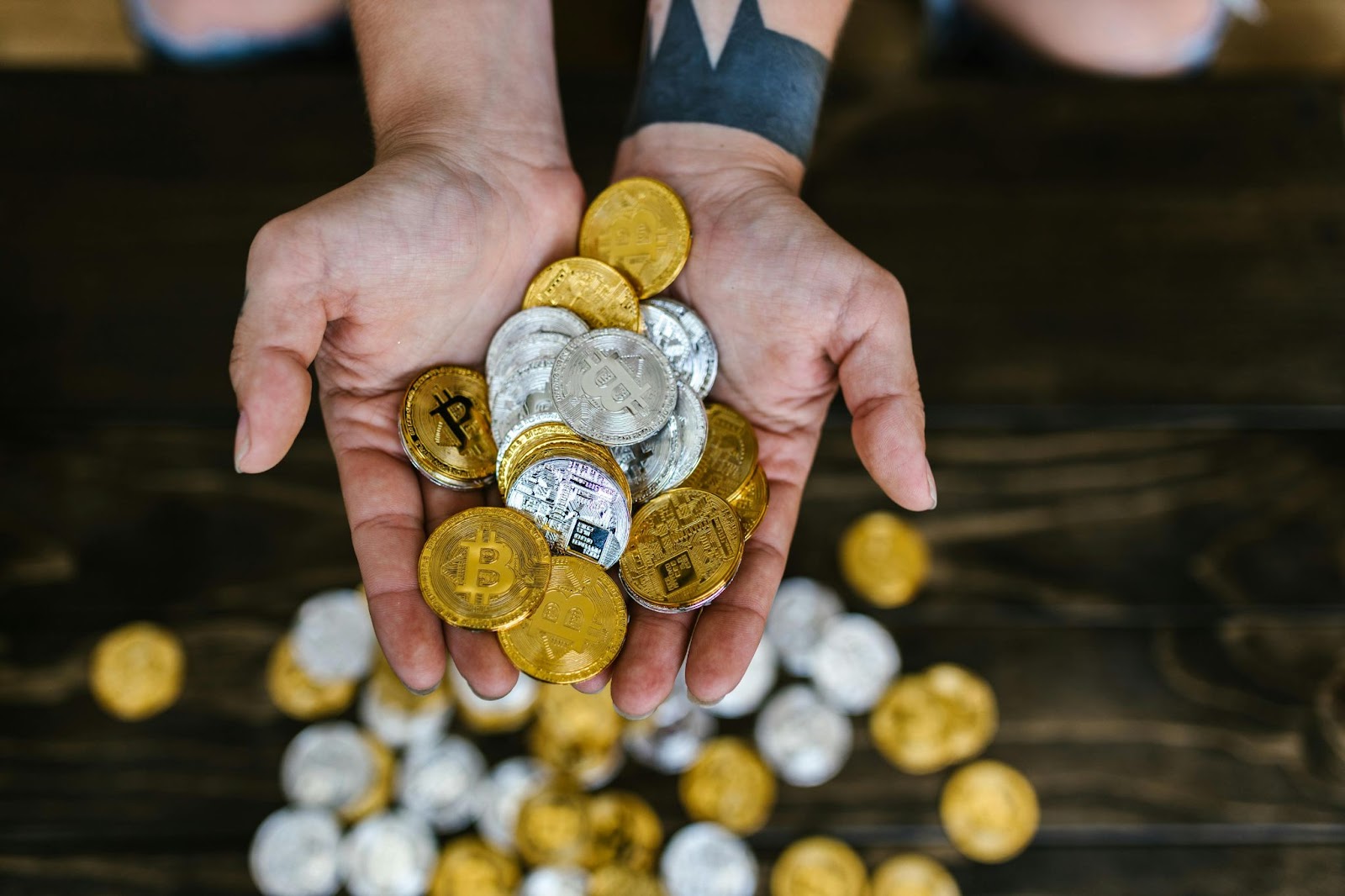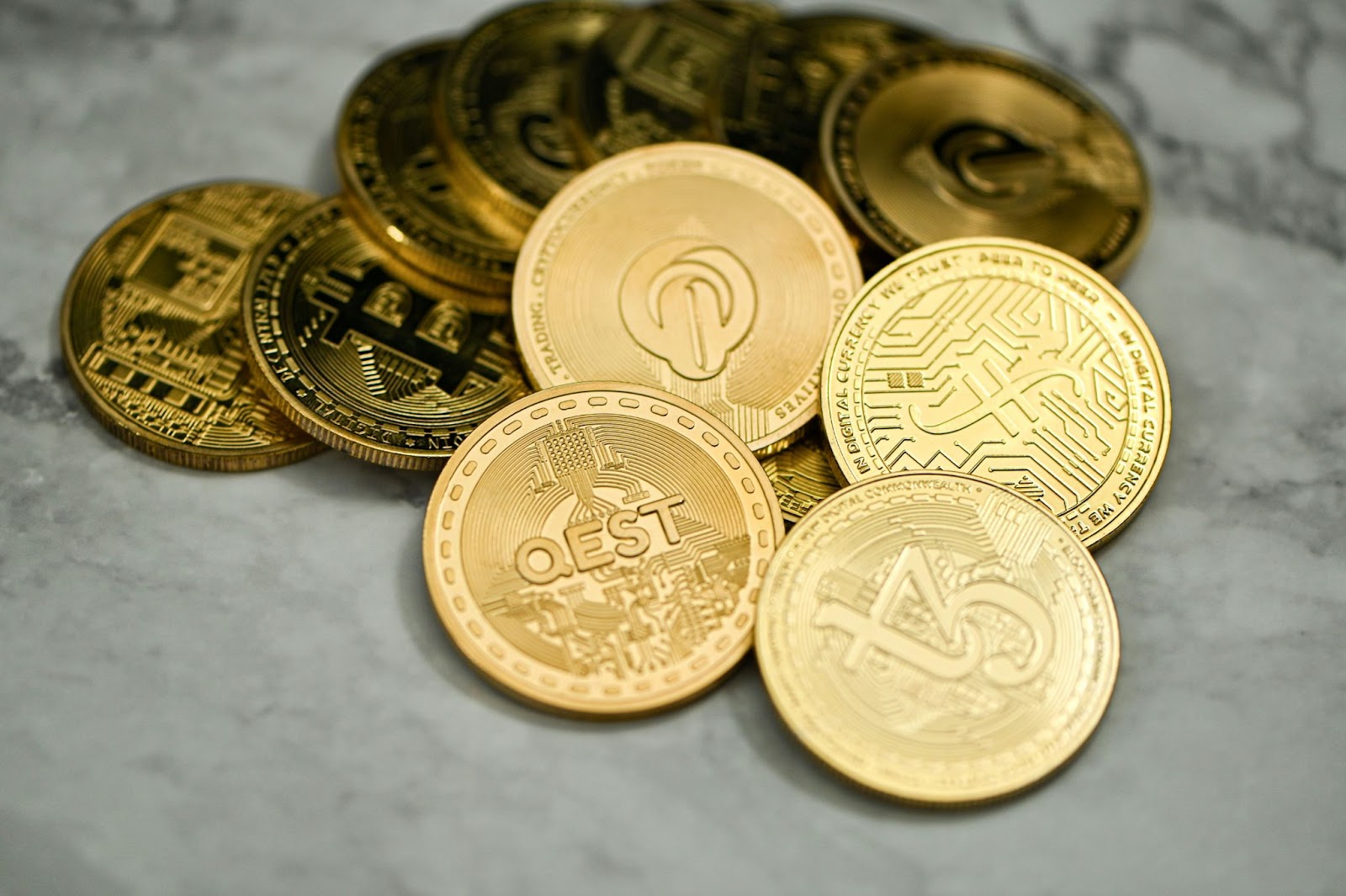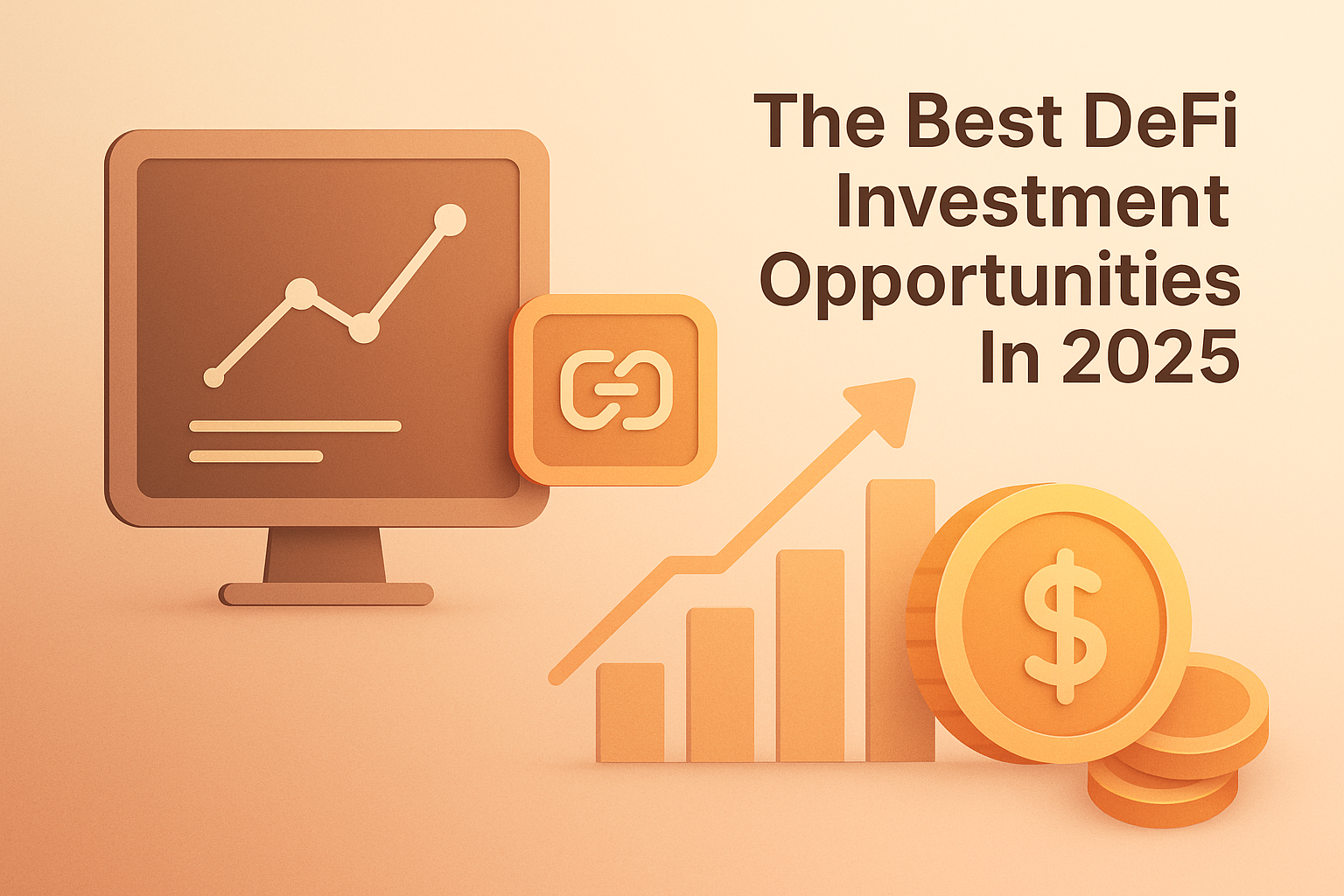Today, we are exploring the best DeFi investment opportunities in 2025. So, read on and discover where you would like to invest next.
Do you ever feel like the traditional financial world is a bit… stale? Think about it: banks, brokers, endless paperwork. It often feels slow and exclusive. Sometimes, quite frankly, even a little behind the times. But what if there was a different way? A way to manage your money, earn interest, and even get loans. All without a central authority?
Enter Decentralized Finance (DeFi). It is a groundbreaking shift in the financial landscape. And it’s built on the transparent power of blockchain technology. It’s like a whole new internet for your money, open to everyone, everywhere. This comprehensive guide will take you on a journey through the exciting world of DeFi. We’ll demystify what it is.
Moreover, we’ll uncover the best DeFi investment opportunities to help you identify top projects. And, we’ll show you how to navigate the risks.
So, get ready to explore the future of finance, right here, right now.
What are blockchain DeFi investments?
Let’s break it down.
DeFi, short for decentralized finance, is all about cutting out the middleman. Think banks, brokers, or any financial institution that usually holds your money or decides who gets access to financial services. In the DeFi world, it’s just you, your wallet, and a set of smart contracts running on a blockchain. Mostly on Ethereum.
These smart contracts are like automated agreements. No human approval. No red tape. Everything is coded and self-executing, which makes transactions faster, cheaper, and way more transparent.
Now, let’s dive into the core principles behind DeFi and explore the best DeFi investment opportunities it brings to the table.
What are the core principles behind DeFi?
Here’s what DeFi is all about:
Decentralization
Instead of relying on one central entity, DeFi systems are distributed across thousands of nodes. This means no single point of control. And less risk of failure or censorship.
Smart Contracts
These are the heart of DeFi. They handle everything from processing loans to rewarding liquidity providers, all without human interference.
Transparency
All transactions are recorded on a public blockchain. You can see how a platform works, where the money flows, and even verify code if you’re tech-savvy.
User Control
Your keys, your coins. In DeFi, you don’t give custody of your funds to a third party. You stay in control at all times.
What are different types of DeFi investments?
So, what are your options when it comes to investing in DeFi? Quite a few, actually. Let’s walk through them.
1. Lending and Borrowing
Platforms like Aave and Compound allow you to lend out your crypto and earn interest. Or, you can borrow against your crypto holdings without selling them. The rates are set by supply and demand. Not by a banker in a suit.
2. Yield Farming and Liquidity Pools
Ever heard of Uniswap or Yearn Finance? These platforms let you provide liquidity to trading pools and earn a share of the fees or extra tokens as a reward. It’s kind of like putting your money to work. But, on steroids.
3. DeFi Tokens and Governance Coins
Many DeFi platforms have their own tokens, like UNI, AAVE, or MKR. Holding these often gives you a say in how the project evolves. They also tend to gain value if the platform grows in popularity.
4. Staking
If you’re into earning passive income, staking might be your thing. You lock up your tokens to support the network and get rewards in return. Some projects, like Lido and Rocket Pool, even let you stake Ethereum with fewer technical headaches.
5. Synthetic Assets
Want to trade stocks or commodities on the blockchain? That’s where platforms like Synthetix come in. They let you create and trade assets that mirror the price of real-world things. Without ever touching Wall Street.
DeFi vs Traditional Finance: How do the two compare?
In traditional finance, banks take your money, lend it out, and pocket most of the profit. They also decide who qualifies for loans and what fees to charge. You play by their rules.
In DeFi, you become the bank. You choose how and where to invest. You earn the interest, moreover you shoulder the risk. But you also take home the rewards.
And that’s why we have so many investors searching for the best DeFi investment opportunities. After all, such opportunities offer a new kind of financial freedom. One that’s backed by code, not permission.
Can I make money from DeFi … meaningfully?

Photo by RDNE Stock project
That’s the million-dollar question, isn’t it?
The short answer is yes. You can make meaningful money with DeFi. But it actually depends on a few different factors. It depends on your strategy, your risk tolerance, and how deep you’re willing to dive into the DeFi ocean.
Let’s unpack how people actually earn in this space, and whether these best DeFi investment opportunities are truly worth it for you.
What are the different ways to earn in DeFi?
There’s more than one road to profit in DeFi. Some are slow and steady. Others are fast. And a little wild. Here’s a breakdown of the most common ways investors make money.
1. Earn Interest from Lending
This is one of the simplest ways to get started. Platforms like Aave or Compound let you lend your crypto to others. In return, you earn interest. Kind of like a savings account, but with much higher rates.
While a traditional bank might give you 0.5% APY (if you’re lucky), DeFi lending platforms often offer 3% to 10% or more, depending on the asset. And you’re not locked in. You can withdraw whenever you want, without begging a bank manager.
2. Yield Farming & Staking Rewards
Here’s where things get juicy. Yield farming means hopping between liquidity pools to chase the highest returns. You provide crypto to a pool, and in return, you earn a share of transaction fees plus extra rewards in the form of governance tokens.
Then there’s staking. It is kind of like crypto’s version of earning dividends. You lock up your coins to support a network (like Ethereum, Solana, or Avalanche), and the network rewards you for it.
Depending on the platform, APYs can range from a modest 5% to a thrilling 100%+ in some newer or riskier pools. Yes, those numbers are real. But remember, risk follows reward.
3. Token Appreciation
Let’s not forget the good old-fashioned way to earn: buying low and selling high. DeFi tokens like UNI, MKR, or AAVE have skyrocketed in value during bull runs. If you get in early and pick the right project, token appreciation alone can bring serious gains.
That said, tokens can crash too. So don’t put all your eggs in one blockchain basket.
Is DeFi a good investment opportunity?
That depends on how you define “good.”
If you’re looking for potentially high returns and more control over your investments, DeFi offers both. Some users earn passive income that rivals or even beats traditional investments. But—and this is important—DeFi is not risk-free.
High Returns vs. High Risk
The DeFi space is known for its jaw-dropping yields. But those come with volatility, smart contract bugs, platform hacks, and sometimes, complete project failure. It’s a bit like the Wild West out there. You need to be sharp, stay informed, and never invest more than you’re willing to lose.
That said, many investors find it worth the risk. Especially those who do their homework.
Passive income that works for you
One of the most exciting parts of DeFi is the chance to earn while you sleep. Unlike traditional markets that close at 5 PM, DeFi never stops. Your money is always working. Whether it’s staked in a pool or earning interest in a lending protocol, DeFi offers real passive income potential.
And it’s not just for whales or tech geniuses. Thanks to intuitive wallets and simplified platforms, even beginners can get started with just a few taps.
Realistic Returns: A quick reality check
How, how much can you realistically expect to earn from DeFi? Let’s look at a few real-world examples:
- Aave (Lending): You can earn 5–10% APY on stablecoins like USDC or DAI. It’s safe, steady, and simple.
- Uniswap (Liquidity Pools): Returns can vary widely. From 10% to 60%+ depending on trading volume and fees.
- Yearn Finance (Yield Aggregator): Automates your farming strategy. In peak times, users saw 80–100% APY. Today, it’s often closer to 10–30%.
- High-risk farms on new platforms: Some offer 200%+ APY. But with major volatility and smart contract risk.
As you can see, there’s a wide range of potential outcomes. The higher the reward, the more research (and courage) you’ll need.
Who is DeFi really for?
DeFi isn’t for everyone. Aand that’s okay. It’s ideal for:
- Risk-tolerant investors who understand volatility and don’t panic at price dips.
- Crypto-savvy users who already know their way around wallets, tokens, and gas fees.
- Research-driven folks who like to dig into whitepapers, Discord channels, and on-chain data before investing.
If that sounds like you, then diving into the best DeFi investment opportunities might just be your next big move. But if you’re looking for guaranteed safety and simple setups, you might want to start small. Or stick to more traditional investments.
So… Can you make money from DeFi?
Absolutely. Many already do.
But it’s not a magic money machine. DeFi rewards those who are curious, cautious, and consistent. There’s real opportunity here. But it comes with real responsibility too. Treat it like a business, not a get-rich-quick scheme. Do your research. Test with small amounts. Stay up-to-date. And always, always know the risks before jumping in.
DeFi is a brave new world. And with the right moves, it could be a very profitable one.
What are the best DeFi investment opportunities (2025 Edition)?
If you’ve made it this far, you already know that DeFi is more than just a crypto buzzword. It’s a fast-moving, ever-evolving financial frontier. But which corners of this decentralized world are actually worth your time. And your money?
Let’s dive into the best DeFi investment opportunities for 2025. We’ll break down each one, keep it simple, and help you figure out what might work best for your goals.
DeFi Lending Protocols
Let your crypto work while you relax
Examples: Aave, Compound
Let’s start with something stable. DeFi lending protocols are like digital banks. And that’s without the banks. You lend your crypto to a smart contract, and other users borrow from it. In return, you earn interest.
Platforms like Aave and Compound make this easy. Just deposit, sit back, and earn. Most people lend stablecoins like USDC or DAI, because they’re less volatile.
- Earnings: Typically 3%–10% APY for stablecoins. Riskier tokens can offer more.
- Pros: Simple to use, relatively low risk, passive income.
- Cons: Protocol risks (bugs, hacks), interest rates can change fast.
- Perfect for: beginners looking for safer ways to earn yield without needing to trade.
Yield Farming & Liquidity Pools
High risk, high reward. But, with a learning curve
Examples: Uniswap, Balancer, Curve
Yield farming is where DeFi gets spicy. The idea? You provide liquidity to decentralized exchanges (DEXs), and they reward you with trading fees plus bonus tokens. Let’s say you add ETH and USDC to a Uniswap pool. You earn a cut every time someone trades between those tokens.
But there’s a catch: impermanent loss. That’s what happens when one token’s price moves a lot, messing with your pool share. It’s not always “loss” unless you withdraw, but it can eat into your profits.
- Earnings: Ranges wildly. From 10% to over 100% APY, depending on pool size, token volatility, and platform rewards.
- Pros: Big earning potential, token incentives.
- Cons: Impermanent loss, complex strategies, higher risk.
- Perfect for: experienced users who like tinkering and chasing high yields.
Staking DeFi Tokens
Passive income with long-term value
Examples: Lido Finance, Rocket Pool
Staking has become one of the most popular DeFi activities. Especially after Ethereum’s shift to proof-of-stake. By locking up ETH (or other PoS tokens) through platforms like Lido or Rocket Pool, you help secure the network and earn rewards. These platforms remove the technical headache of running a node yourself.
- Earnings: 4%–7% APY on ETH staking, depending on network activity and fees.
- Pros: Passive, relatively stable, supports the blockchain.
- Cons: Locked funds (in some cases), protocol risks.
- Bonus: Lido gives you a liquid token (stETH), so your staked ETH can still be used elsewhere.
- Perfect for: long-term holders who want steady gains without the daily hustle.
DeFi Insurance
Protect your crypto from unexpected disasters
Examples: Nexus Mutual, InsurAce
Let’s be real: DeFi is risky. Platforms can be hacked. Smart contracts can break. That’s where DeFi insurance comes in.
Nexus Mutual and InsurAce offer coverage for smart contract failures, exchange hacks, and even de-pegged stablecoins. You pay a premium to protect your funds. And guess what? You can also invest in these platforms and earn by underwriting risk.
- Earnings: Up to 15%+ APY if you’re a capital provider.
- Pros: Peace of mind, strong growth potential, essential for DeFi’s future.
- Cons: Still a niche area, lower liquidity, policy limitations.
- Perfect for: risk-aware investors who want to protect or profit from the safety side of DeFi.
Synthetic Assets & Derivatives
Mirror the real world. Without leaving crypto
Examples: Synthetix, dYdX
Want to trade stocks, forex, or commodities? And, you wish to do that using only crypto? That’s where synthetic assets and DeFi derivatives shine. Synthetix lets you create tokens that represent everything from gold to Tesla stock. dYdX offers perpetual contracts for crypto traders, with no expiration dates.
These tools bring Wall Street to Web3. But they’re not for the faint-hearted.
- Earnings: Depends on trading skill or liquidity provisioning. High potential.
- Pros: Access to new markets, leverage opportunities.
- Cons: Volatile, complex, can result in fast losses.
- Perfect for: traders and advanced investors looking to diversify beyond just tokens.
Picking what’s best for you…
The truth is, there’s no “one-size-fits-all” answer when it comes to the best DeFi investment opportunities. It really depends on your goals, your comfort with risk, and how much time you want to spend managing your portfolio.
- If you want steady and simple. Lending and staking are your friends.
- If you love action and don’t mind risk. Yield farming or synthetics could suit you.
- And if you’re cautious but curious. Insurance might be a hidden gem.
Diversifying across these options can also help balance risk and reward.
Wrapping it up
DeFi in 2025 isn’t just about coins anymore. It’s an entire ecosystem of earning potential. From lending and staking to farming and synthetic trading, the best DeFi investment opportunities span a wide spectrum of strategies and skill levels.
Start small. Learn fast. And don’t be afraid to explore. The DeFi world moves quickly, but the opportunities? They’re wide open for those willing to dive in.
Next up, we’ll explore which DeFi coins are worth watching. And why some may just be the next big thing.
What are the top DeFi coins to invest in?

Choosing the right DeFi coins can feel like trying to pick a winning lottery ticket in a sea of tokens. But it doesn’t have to be that way. With a bit of research and a dash of common sense, you can spot the ones that actually matter.
So, if you’re looking to discover the best DeFi investment opportunities, don’t just look at platforms. Look at the coins that power them. These tokens often offer real utility, governance rights, and, yes, solid earning potential.
Let’s dive into the top DeFi coins for 2025. And what makes them worth watching.
1. Uniswap (UNI)
The face of decentralized trading.
Uniswap isn’t just a protocol. It’s the protocol. This DEX basically invented the automated market maker (AMM) model that most others now use. If you’ve ever swapped tokens without an account or KYC, chances are, you’ve used Uniswap.
The UNI token gives holders a say in the platform’s future. While it doesn’t offer fee-sharing (yet), governance over a billion-dollar protocol is no small thing.
- Use case: Powers Uniswap governance, helps steer the protocol.
- Why it matters: High trading volume, constant innovation (like Uniswap v4).
- Downside: Doesn’t currently provide direct yield.
- Best for: believers in DeFi infrastructure and long-term adoption.
2. Aave (AAVE)
The king of crypto lending.
If Uniswap is the market, Aave is the bank. It’s a decentralized lending platform where users can borrow, lend, and earn interest without intermediaries. And it’s built a rock-solid reputation over the years.
The AAVE token lets holders participate in governance decisions—like setting protocol parameters and risk management rules. Plus, stakers can earn rewards while helping secure the platform.
- Use case: Governance, staking, and protocol utility.
- Why it matters: Leader in DeFi lending, supports multiple networks.
- Downside: Competes with other strong protocols like Compound.
- Best for: investors who value safety, reputation, and DeFi’s “blue chips.”
3. Maker (MKR)
The OG DeFi governance coin.
MakerDAO is the protocol behind DAI, one of the most trusted decentralized stablecoins. The MKR token plays a vital role in governing the protocol, managing collateral types, and keeping DAI stable.
Though not flashy, MKR is powerful. It’s deeply embedded in DeFi, and its holders literally vote on how the system operates.
- Use case: Governance, emergency shutdowns, protocol upgrades.
- Why it matters: Anchors the DeFi ecosystem, has staying power.
- Downside: Limited utility beyond governance, not beginner-friendly.
- Best for: strategic investors who believe in the long game.
4. Curve DAO (CRV)
Stablecoin swapping specialist.
While most DEXs handle all kinds of token pairs, Curve Finance focuses on stablecoins and similar assets. That makes it incredibly useful for low-slippage trades and big transactions. The CRV token rewards liquidity providers and allows users to vote on Curve’s parameters. Locking CRV for veCRV (vote-escrowed CRV) unlocks better rewards and boosts.
- Use case: Governance, boosted rewards, staking.
- Why it matters: Massive TVL, institutional adoption.
- Downside: Tokenomics can be complex, inflation-heavy.
- Best for: yield farmers and users who like to go deep into strategy.
5. Synthetix (SNX)
Real-world assets in crypto form.
Ever wanted to trade gold or stocks. But using crypto? That’s the idea behind Synthetix. It lets you mint synthetic assets that track the price of real-world things, without owning them directly. SNX is used as collateral to mint these synths. Holders can also stake SNX and earn fees from platform usage.
- Use case: Collateral, staking rewards, governance.
- Why it matters: Bridges DeFi and traditional finance.
- Downside: Still growing adoption, regulatory uncertainty for synths.
- Best for: investors looking for exposure to real-world assets in a DeFi wrapper.
6. Lido DAO (LDO)
Liquid staking, made easy.
With Ethereum’s shift to proof-of-stake, staking became essential. Lido Finance jumped on this wave, allowing users to stake ETH and receive stETH in return—a token that stays liquid while you earn. LDO holders govern how Lido works, including which validators to trust and how fees are distributed. As more ETH gets staked, Lido’s role only grows.
- Use case: Governance, protocol direction, fee decisions.
- Why it matters: Leader in Ethereum staking, critical infrastructure.
- Downside: Centralization concerns, dependent on Ethereum success.
- Best for: ETH holders who want rewards without giving up liquidity.
Things to consider before you buy
Now, before you dive head-first into these tokens, take a moment to think.
1. Use Case Matters
Is the token actually used within the platform? Does it fuel something, govern something, or reward something? Utility is everything.
2. Governance Power
Some DeFi tokens come with a real voice in the ecosystem. If you care about shaping the future of a protocol, governance tokens are worth your attention.
3. Community & Development
Look beyond the price chart. Is the project still being updated? Is the community active? A sleeping dev team is never a good sign.
Are DeFi coins a good investment?
Short answer? They can be. Long answer? It depends on your goals and how much risk you’re willing to take.
DeFi tokens can be volatile. Just like any crypto. Prices can swing wildly based on news, hacks, regulations, or broader market trends. But they also represent the heart of a financial revolution. Many of these tokens don’t just sit idle. They do things.
You can stake them, vote with them, earn from them. They’re not just “hold and hope” coins.
Plus, they offer a smart way to diversify your crypto portfolio. Instead of only holding Bitcoin or Ethereum, mixing in DeFi tokens gives you exposure to some of the most innovative financial tools out there.
Finally…
Whether you’re new to crypto or deep in the DeFi rabbit hole, knowing which coins power this ecosystem is crucial. The best DeFi investment opportunities don’t just come from using the platforms. They come from owning a piece of them.
From UNI and AAVE to LDO and SNX, each of these tokens brings something unique to the table. Pick the ones that align with your strategy, do your homework, and always manage your risk.
And remember, DeFi moves fast. And so, stay curious, stay cautious, and stay invested in learning.
Which DeFi platform is the best?

Image on Freepik
If you’ve made it this far, you’re probably thinking: “All right, DeFi sounds amazing… but where do I start?”
Fair question. And honestly, it’s the right one to ask.
With hundreds of platforms claiming to be the best, choosing where to put your money can feel like standing in a crypto supermarket with way too many options. So let’s cut through the noise. Let’s talk about the top platforms powering the best DeFi investment opportunities in 2025. Moreover, we’ll figure out which one suits you best.
Aave – The Lending Giant
Let’s kick things off with Aave. This is the go-to platform if you’re into lending or borrowing crypto without ever talking to a bank. It’s like having your own digital savings account—except, your interest rate is often way better.
Why people love Aave:
- Super easy to use for both borrowers and lenders.
- Wide variety of supported assets.
- Transparent and battle-tested.
But there are trade-offs:
- If you’re borrowing, interest rates can swing.
- There’s always a learning curve for first-timers.
- Risk of smart contract bugs. Though Aave’s security has been solid so far.
Best for: Long-term investors who want steady passive income or those looking to leverage their crypto holdings.
Uniswap – The DEX That Changed Everything
When people say “decentralized exchange,” chances are they’re talking about Uniswap. It made it possible to swap tokens without an account, middleman, or paperwork. Just plug in your wallet and go.
Why Uniswap rocks:
- Super user-friendly.
- Massive liquidity and token variety.
- No need to give up custody of your coins.
But here’s the flip side:
- Gas fees on Ethereum can be painful during network congestion.
- Impermanent loss is real if you’re a liquidity provider.
Best for: Beginners looking to trade tokens easily and securely, or DeFi veterans farming yields in liquidity pools.
Yearn Finance – The Smart Saver’s Playground
Want your crypto to earn while you sleep? Yearn Finance is your friend. It automatically finds the best DeFi yields for your assets. Think of it as DeFi’s version of a robo-advisor. Smart, automated, and always working.
Why it’s awesome:
- Automates complex yield strategies.
- Takes the guesswork out of yield farming.
- Great for hands-off investors.
But consider this:
- It can be intimidating at first glance.
- Strategies change often, so staying informed helps.
- Fees can cut into smaller portfolios.
Best for: Passive investors, hands-off crypto holders, and anyone who wants high returns without micromanaging.
Curve Finance – The Stablecoin Specialist
Looking to earn on your stablecoins? Curve is your spot. It’s tailored for stable asset swaps, so you’re less exposed to wild price swings. It also happens to be a favorite hangout for whales and institutions.
Why Curve is clever:
- Low slippage and high efficiency.
- High rewards for liquidity providers.
- Strong focus on stability and security.
But heads-up:
- Interface isn’t the prettiest (yet).
- Understanding veCRV (vote escrow) system takes time.
- Complex yield mechanics can confuse newcomers.
Best for: Stablecoin holders, yield optimizers, and those who hate volatility but love income.
SushiSwap, Balancer & PancakeSwap – The Alt-Dex Trio
Not every DeFi adventure needs to start on Ethereum. Platforms like SushiSwap, Balancer, and PancakeSwap offer excellent alternatives. Often with lower fees and cool extras.
- SushiSwap: Like Uniswap, but with its own reward system and multi-chain reach.
- Balancer: Unique pool mechanics where you can customize your asset ratios.
- PancakeSwap: Built on Binance Smart Chain, which means lightning-fast trades and low fees.
Why they’re solid:
- Competitive yields and community-driven development.
- Often offer better rewards than bigger platforms.
- PancakeSwap is especially beginner-friendly.
But beware:
- Security is a mixed bag. Some platforms have faced hacks.
- Token inflation can dilute rewards.
- Lower TVL (total value locked) on some chains.
Best for: Budget-conscious traders, adventurous yield chasers, and those exploring chains beyond Ethereum.
How to match platforms to your investment style?
No two investors are the same. Some want to chase yields. Others just want to sleep well at night knowing their assets are earning something.
Here’s how to break it down:
For Beginners:
- Start simple with Uniswap or PancakeSwap.
- Focus on platforms with clean interfaces and low risk.
- Stick to stablecoin pools or lending platforms like Aave.
Research-Driven Investors:
- Explore Yearn Finance strategies.
- Dive into Curve’s voting mechanics.
- Tinker with Balancer’s custom pools.
Yield Chasers:
- Try SushiSwap’s farming programs.
- Stake on PancakeSwap for juicy APRs.
- Keep an eye on new vaults on Yearn.
For Conservative Investors:
- Stick with stablecoin pools on Curve or lending on Aave.
- Focus on blue-chip DeFi platforms with long track records.
- Diversify across DeFi and CeFi to manage exposure.
How to choose the best DeFi platform?
Now comes the most important part: making the right choice for you.
Security First
No matter how shiny the APR, always ask: Has this platform been audited?
Smart contract bugs are real. Choose platforms with a history of audits and bug bounties.
Decentralization & Control
Look for protocols that empower users. Are decisions made through governance? Do you keep custody of your funds?
Liquidity
More liquidity = less slippage = better trading. Uniswap and Curve shine here. Smaller platforms may offer high returns but suffer from thin liquidity.
Community & Development
An active developer community means regular updates, feature releases, and quick fixes. Dead communities are a big red flag.
Transparency
Do they publish audits? Share governance votes? Have open communication? If not, move on.
Overall…
There’s no single answer to the question: “Which DeFi platform is the best?” It’s like asking which car is best. It depends on the driver.
Some platforms are perfect for beginners. Others reward those willing to dig deep, take risks, or experiment with new chains. The good news? You don’t have to pick just one. With a bit of balance, you can spread your capital across several of the best DeFi investment opportunities out there.
So explore. Compare. Play around with small amounts first. And most of all. Have fun. DeFi isn’t just investing. It’s participating in the future of finance.
How risky is investing in DeFi?

Image on Freepik
DeFi isn’t all rainbows and yields. While the rewards can be thrilling, the risks can sneak up just as fast. If you’re eyeing the best DeFi investment opportunities, it’s just as important to understand the dangers that come with the territory.
But don’t worry. We’re not here to scare you away. We’re here to prepare you. So let’s explore what could go wrong, and more importantly, how you can stay safe while still enjoying the upside.
The hidden dangers in DeFi
Here’s what to look out for:
Smart Contract Bugs
DeFi runs on code. And sometimes… code breaks. A small glitch in a smart contract can result in massive losses. One tiny bug, and poof, millions gone. Even top protocols aren’t immune, although they do take stronger precautions.
Rug Pulls & Scams
Some DeFi projects look shiny on the outside. But behind the scenes, developers might be plotting an exit. This is called a “rug pull,” where creators drain the liquidity pool and disappear. If it sounds shady, that’s because it is.
Impermanent Loss
If you’re providing liquidity in a pool (like on Uniswap or Curve), the price difference between two tokens can actually make you lose money. Even if both go up. That’s an impermanent loss. It’s confusing at first, but real.
Token Volatility
Crypto tokens can swing up and down faster than a rollercoaster in a hurricane. While this creates opportunity, it also makes DeFi investing risky, especially if your token drops before you can cash out your gains.
Regulatory Uncertainty
Governments are still trying to figure out how to handle DeFi. Some love it. Some hate it. New rules could impact projects overnight, especially those that operate without KYC or clear legal frameworks.
How to play smart (and safe)?
Now, let’s flip the script. You don’t need to be a coding genius to stay safe. You just need to be smart about where you park your crypto.
Stick to Audited Protocols
Always, always choose DeFi platforms that have been audited by reputable firms. Audits don’t make them bulletproof. But they sure make them a lot safer. Aave, Uniswap, and Curve, for instance, all undergo regular security checks.
Diversify Like a Pro
Don’t go all-in on a single token or strategy. Spread your capital across different platforms, coins, and risk levels. That way, if one thing tanks, your entire portfolio doesn’t go with it.
Avoid the Shady Stuff
If a project promises 1000% APY and has zero transparency, run. Seriously—run. Stick to communities with track records, active teams, and clear documentation.
Stay in the Loop
Keep your ear to the ground. Follow platforms like DeFi Pulse, DeFiLlama, Reddit forums, and Twitter threads. The DeFi space moves fast, and staying informed is your secret weapon.
Responsible Investing = Sustainable Rewards
Look, taking risks is part of the game. But there’s a big difference between being bold and being reckless. If you do your homework, use legit platforms, and never invest more than you can afford to lose, DeFi becomes a world of opportunity. Not just uncertainty.
The best DeFi investment opportunities come with their fair share of risk. But with the right mindset and a solid plan, you can enjoy the ride and stack your gains. Without losing sleep.
Because in DeFi, knowledge is your best defense. And caution? That’s just smart investing.
What is the future of DeFi?

Image on Freepik
DeFi isn’t just a trend. It’s a full-blown movement. And while we’ve already seen explosive growth, the next chapter promises to be even more exciting. Maybe even revolutionary. So, what’s coming next? Let’s take a quick peek into the future of decentralized finance.
Real-World Assets Go Digital
First off, real-world asset tokenization is gaining serious momentum. Imagine owning a slice of real estate, gold, or fine art. All through the blockchain. That’s not science fiction anymore. It’s already happening.
And soon, DeFi platforms might allow anyone to invest in physical assets, instantly and globally. This could open doors to a whole new class of investors. Yes, create some of the best DeFi investment opportunities we’ve seen yet.
Institutions Are Joining the Party
For a while, DeFi was a playground for crypto enthusiasts. But now, the big players are stepping in. Banks, hedge funds, and even governments are exploring DeFi tools. With institutional adoption, expect better infrastructure, higher security, and—most importantly—more money flowing into the ecosystem.
Scaling Up with Layer 2s
High gas fees? Long transaction times? Nobody’s got time for that. That’s why Layer 2 scaling solutions like Arbitrum, Optimism, and zkSync are changing the game. They make DeFi faster, cheaper, and way more user-friendly. Especially for smaller investors.
The Rise of Cross-Chain DeFi
Ethereum might be the heart of DeFi, but it’s no longer the only player. Platforms like Polkadot, Cosmos, and Avalanche are connecting blockchains like never before. This “cross-chain” future means more choices, smoother trades, and wider access for everyone.
So, what happens next?
Here’s what many experts see coming:
- Regulatory clarity could build trust and bring more mainstream users in.
- DeFi ETFs and structured products might become a thing, bridging traditional and decentralized finance.
- Gamified DeFi (aka GameFi) will likely explode, blending finance and fun like never before.
Moreover, will DeFi replace banks completely? Probably not. But it’s likely to coexist. Offering alternatives where the old system falls short.
The road ahead won’t be perfect. But one thing is certain: DeFi is growing up. And if you stay curious, stay cautious, and stay involved, you’ll be ready to spot the best DeFi investment opportunities as they unfold in real time.
Conclusion
DeFi isn’t just reshaping finance. It’s rewriting the rules. From earning passive income to exploring tokenized assets, the possibilities are wide open. But like any new frontier, it comes with its fair share of risks and rewards.
So, do your homework. Start small. And always stay curious.
Whether you’re lending on Aave, staking with Lido, or farming yield on Uniswap, there’s no shortage of the best DeFi investment opportunities waiting to be explored. Just remember: In DeFi, you’re not a customer. You’re in control. And that changes everything.

